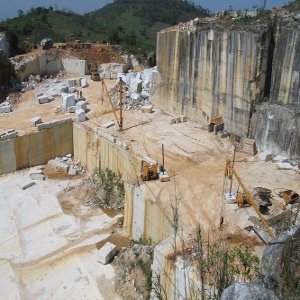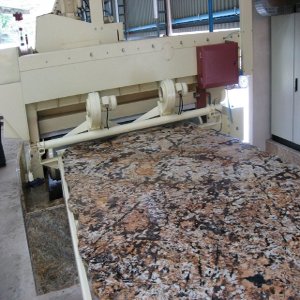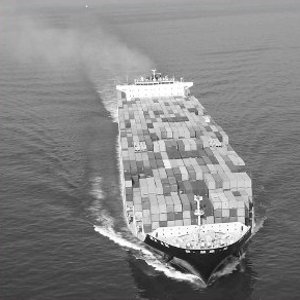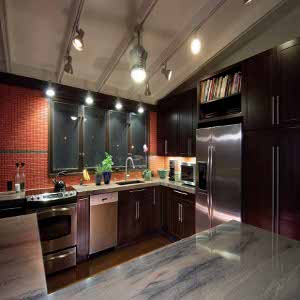 |
Quarry:
Blocks are excavated from various quarries in different parts of the
world. Blocks range in different sizes and shapes depending on excavation
techniques. The size and shape of the block determine the dimensions of
the finished slabs. Every quarry produces a unique color of stone, which
will vary slightly with each block that is removed from that quarry. It is
common for the shade of stone to change slightly as the process moves to
different areas of the same quarry over time. Some quarries will cover an
expansive area that may have many different plots, large distances away
from one another. Also, within the same geographic area, there can be a
family of quarries that look similar, but have a wide variation of color,
that will all be tagged with the same name.
|
 |
Factory:
After the block is removed from the quarry it is transported to the
factory where it is cut into slabs.
A gangsaw is used to cut the block into slabs that are a standard
thickness of 1 ¼” or ¾” depending on the application in which they will be
used. A single block usually
produces around 50 slabs that are 1 ¼” thick. The next stage of production
varies depending on the composition, hardness, and color of the granite,
marble, or other material being cut.
Some slabs will have a resin applied to the face of the material as
the next phase in production.
A resin is used to fill in any imperfections of a slab, give the
material more durability, or to enhance the color. Other materials may require
different applications, or little to no added solutions during the process
depending on the characteristics of the material being used. The slabs are then moved into an
oven that heats the slabs to harden them before being sent to the
polishing line. The polishing
line consists of a machine with multiple rotating heads that move
continuously over the face of the slabs to give the high polish look that
makes stone so popular to consumers.
Other techniques have come to the marketplace in past years such as
Leather Finish, River-Wash, Honed, Flamed etc.
|
 |
Import/Export:
The vast globalized market today allows customers to
obtain any commercially produced stone that is desired. This is made available by
factories being able to pack slabs and tiles into containers that are
exported to wholesalers around the world. Once a container is closed, a
truck picks up the container and transports it to a container ship that
sails to a port, at which time another truck picks up the container and
delivers it to a warehouse.
|
 |
Vector Stone Warehouse:
Vector Stone deals directly with quarries and factories all over the world, importing only the finest quality stone available. At the Vector Stone warehouse, customers can view over 200 colors of granite and marble slabs in the constantly growing inventory. The inventory includes well known classic colors along with rare exotic stones from various countries. Vector Stone is open to public, and offers knowledgeable insight to customers to choose the best stone for each project. This includes matching cabinets to complementing slab colors, explaining different types of variations, movements, and color tones, as well as the applications of each stones and finishes. Once the desirable slab has been selected and tagged, will arrange for the slab to be delivered to the fabricator that has been selected by the customer.
|
 |
Fabricators:
The last stage of the process involves the fabrication and
installation of the stone. A
fabricator first starts by taking a template of the granite job. This template is then brought back
to the shop and placed onto the slabs that will be used for the
project. The template is laid
out to capture full character and uniqueness of each material, and utilize
each section of the slab to the best of each customer’s liking. The fabricator then begins cutting
the slabs to the specified job, edging each piece to the customer’s
request, along with making any sink cutouts and backsplashes that may be
needed. Once the fabrication
has been completed, the fabrication crew can install the finished product
and seal the stone to complete the process.
|






